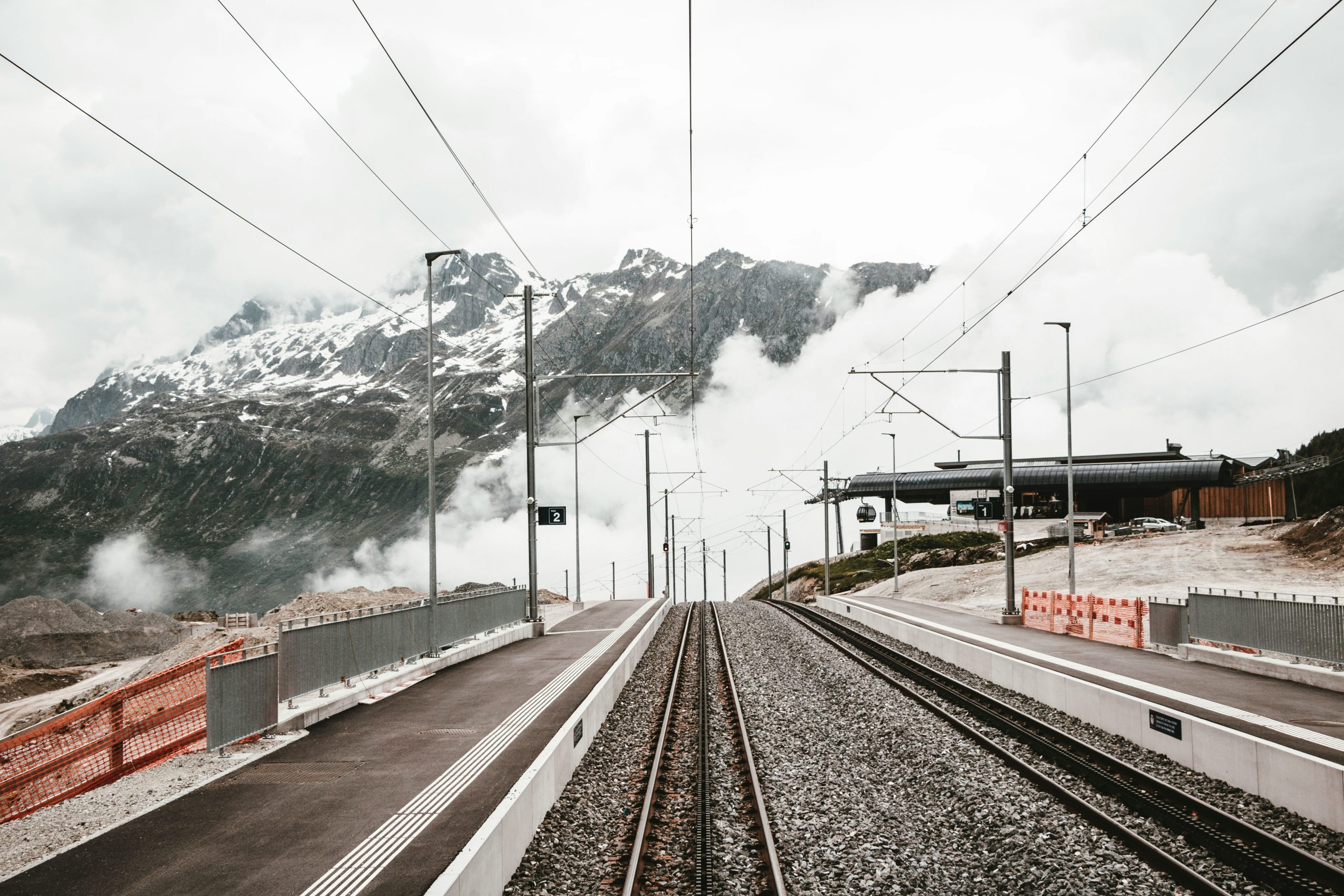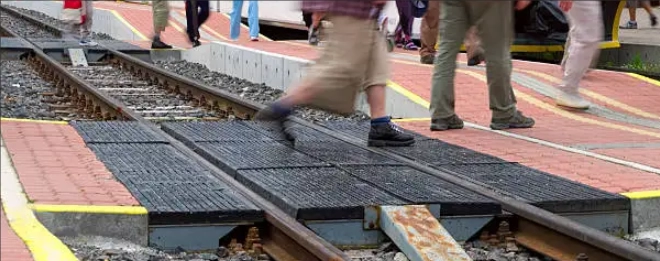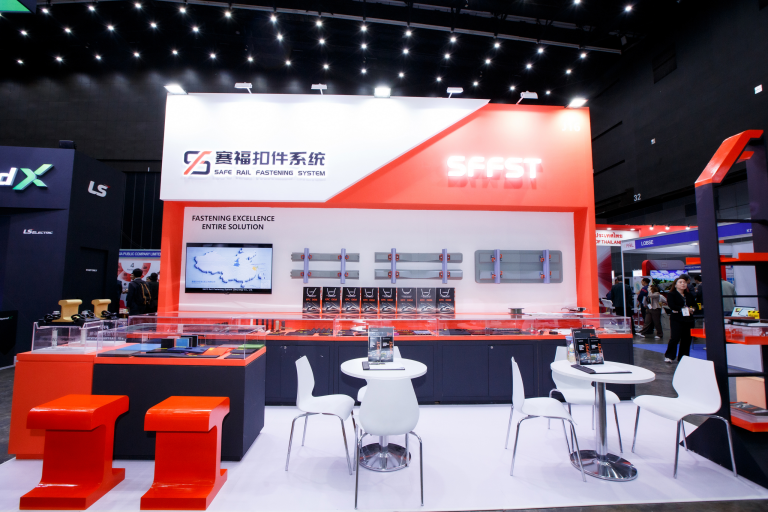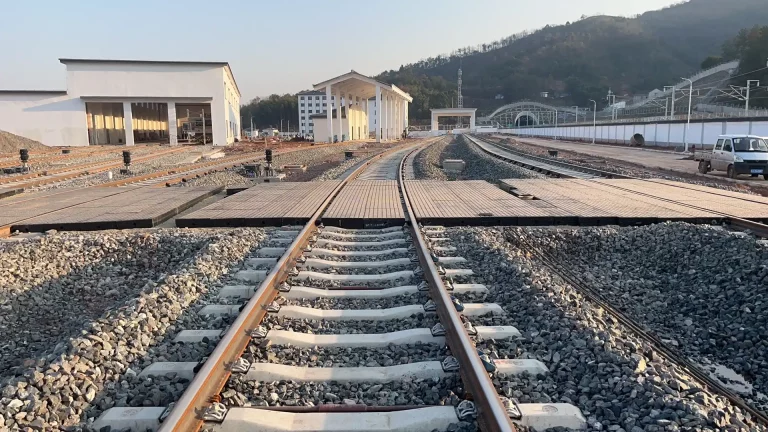Overview of Tension Clamps
Definition and Purpose of Tension Clamps
A tension clamp in railway systems is a crucial component designed to ensure the secure fastening of rails to railway ties and sleepers. These devices are made from high-tensile steel and other robust alloys, they are design for mantaining strong pressure, they can hold the rails firmly in place, at the same time allow a certain degree of elasticity. the main purpose of tension clamps is to improve the stability and safety of railway tracks by absorbing dynamic stresses and minimizing track displacement.
Importance in Rail Infrastructure
Tension clamps can also provide a reliable fastening system, this can help them withstand substantial loads and intense vibrations, hence, reduce maintenance costs and prevent derailments. In high-speed and heavy freight railways, tension clamps’ ability to evenly spread pressure on the railway track is vital for extending the lifespan of the track components and improving railway safety.
Mechanism of a Tension Clamp
Material Composition
The material composition of tension clamps is critical to their performance and durability. High-tensile steel and other alloyed metals are typically used due to their exceptional strength and flexibility. The components are crafted from materials that are subjected to stringent treatments. These processes are designed to strengthen the materials’ ability to resist corrosion, fatigue, and wear, enhancing their durability and performance.. Selecting the right materials is crucial, as it equips the tension clamps to withstand severe environmental challenges, such as drastic temperature fluctuations and exposure to moisture. This careful material engineering contributes to the extended lifespan and dependability of tension clamps, which is essential for the sustained efficiency of railway operations.
Engineering Design
The engineering design of tension clamps is a fine balance between strength, flexibility, and ease of maintenance. Typically, the design of these components integrates elements such as smooth, rounded edges and precise angles to maximize clamping force while reducing stress points. Utilizing sophisticated engineering methods, such as finite element analysis and rigorous fatigue testing, these designs are meticulously honed to ensure that the tension clamps can endure numerous cycles of loading and unloading while maintaining their structural soundness. The outcome is a part that not only firmly anchors the rail in place but also enhances the overall fluidity and safety of the rail travel experience.
Load Distribution
One of the critical functions of a tension clamp in railway applications is load distribution. Tension clamps are engineered to evenly distribute the weight and dynamic forces exerted by passing trains across a larger area of the rail and sleeper. This distribution minimizes the risk of rail deformation and track misalignment, which can lead to safety hazards and costly repairs. By ensuring that the loads are evenly spread, tension clamps contribute to the prolonged lifespan of the railway infrastructure and enhance the durability of the track components. This balanced load distribution is especially crucial in high-speed rail systems, where the forces involved are significantly higher.
Vibration Absorption
Vibration absorption is another essential mechanism of tension clamps. Railways are subject to intense vibrations caused by train movements, which can lead to metal fatigue and structural weaknesses over time. Tension clamps are designed to absorb and dampen these vibrations, reducing the stress transmitted to the rails and sleepers. Materials with excellent elasticity and damping properties are used in the construction of tension clamps to achieve this effect. By mitigating the impact of vibrations, tension clamps help in maintaining the integrity of the rail system and minimize the need for frequent maintenance and repairs.
Installation Process
Preparation Steps
Proper installation of tension clamps is crucial for their optimal performance. The preparation steps typically involve a thorough inspection of the rail and sleepers to ensure they are free from defects and deformities. It is essential to clean the surfaces where the clamps will be applied to achieve a secure and contamination-free connection. Precise measurements are taken to align the clamps accurately, and any necessary adjustments to the rail or sleepers are made before installation. These steps ensure that the tension clamps fit perfectly and function as intended, contributing to the overall safety and efficiency of the railway system.
Tools and Equipment Required
The installation of tension clamps requires specific tools and equipment to ensure precision and safety. Commonly used tools include torque wrenches, spanners, and hydraulic jacks for applying the necessary force to secure the clamps. Specialized measurement instruments are used to verify the alignment and gauge the clamping force accurately. In some cases, pneumatic or electric tools may be employed to expedite the installation process, especially in large-scale railway projects. Proper training and adherence to safety protocols are imperative during installation to prevent accidents and ensure the reliability of the tension clamps.
Advantages of Using Tension Clamps in Railways
Durability and Longevity
Tension clamps are designed for durability and longevity, making them a cost-effective solution for railway systems. The high-quality materials used in their construction, combined with advanced engineering techniques, ensure that these components can withstand extreme environmental conditions and repeated load cycles. This durability results in fewer replacements and lower maintenance costs over the lifespan of the rail infrastructure. Tension clamps’ ability to endure the rigorous demands of railway operations enhances the overall resilience and reliability of the rail network.
Enhanced Safety Features
Safety is paramount in railway operations, and tension clamps play a significant role in ensuring it. Their ability to maintain secure rail fastening under dynamic loads and vibrations reduces the risk of track deformation and derailments. Tension clamps’ design and material properties allow them to adapt to temperature variations and other environmental factors, ensuring consistent performance. The incorporation of features such as rounded edges and optimized angles further enhances the safety by minimizing stress concentrations and potential failures. These attributes make tension clamps an indispensable component in modern rail infrastructure.
Maintenance Ease
Another notable advantage of tension clamps is the ease of maintenance they offer. Their design allows for straightforward installation, removal, and adjustments, facilitating efficient maintenance activities. Regular inspection of tension clamps can quickly identify any signs of wear or damage, enabling timely replacements and preventing more severe issues. The accessibility and simplicity of maintaining tension clamps contribute to the overall operational efficiency of railway systems, minimizing downtime and ensuring continuous safe operations.
SAFE Rail Fastening System (Zhejiang) Co., Ltd.
SAFE‘s Tension Clamp is engineered with precision to deliver unparalleled performance in securing rail tracks. It’s the linchpin that holds the rail fastening system together, ensuring that the rails remain firmly in place, even under the strain of high-speed trains and heavy freight loads. This clamp is designed to withstand the dynamic forces that are a daily reality on the tracks, providing a robust and reliable solution that keeps the wheels turning and the journeys safe.
What sets SAFE’s Tension Clamp apart is its exceptional quality and durability. Made from premium materials, it resists corrosion and fatigue, which means less maintenance, fewer replacements, and ultimately, reduced costs for railway operators. It’s a smart investment that pays dividends in the long run, both financially and in terms of operational reliability.
Common Issues and Troubleshooting
Wear and Tear Indicators
Despite their durability, tension clamps are subject to wear and tear over time due to the continuous stresses they endure. Common indicators of wear include visible deformation, corrosion, and loss of clamping force. Regular inspections are essential to identify these signs early and take corrective actions. Advanced diagnostic tools can measure the tension and detect any anomalies that might indicate an impending failure. Addressing wear and tear promptly ensures that the rail fastening system remains reliable and safe.
Replacement Guidelines
Replacing worn or damaged tension clamps is a critical maintenance task that should be conducted following specific guidelines. It involves carefully removing the affected clamps and replacing them with new ones that meet the original specifications. Ensuring proper alignment and secure fastening is crucial during replacement to maintain the integrity of the rail system. Using quality replacement parts and adhering to the manufacturer’s instructions can prevent future issues and ensure the longevity of the newly installed tension clamps. Regular training and adherence to best practices in replacement procedures are essential for maintaining the safety and efficiency of railway operations.











